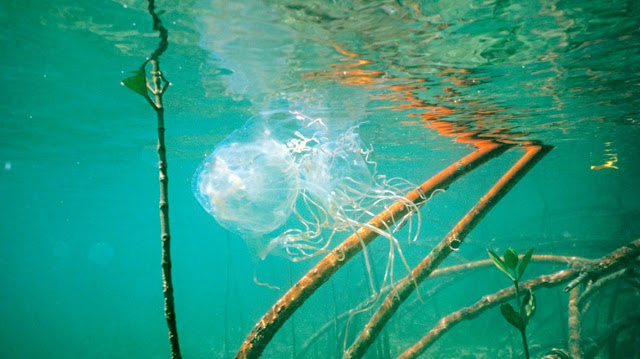Deadly Box Jellyfish Danger A Widespread Problem
Box jellyfish are widespread throughout the Indo-Pacific region and, while this blog is primarily focused on South-East Asia, tragic news of a fatality in a far north-east corner of tropical Australia resonates with relevancy throughout thousands of similar coastal communities.
A young man of 17 has sadly lost his life, stung by a box jellyfish while net fishing with family at a faraway beach on the York Peninsula.
Box jellyfish are active right across the northern stretch of Australia during the wet season from October to May and stings from Chironex fleckerii and Irukandji occur though deaths are uncommon.
Australia has developed a reasonably sophisticated and successful system of prevention and treatment education and tools so as to avoid tragic deaths such as that which occurred at Bamaga in Queensland this week.
But, it's far from perfect. In fact, its effectiveness through concerted effort over a number of years is limited to specific places and areas, usually those frequented by tourists or popular with locals.
Remote areas remain largely exposed to the risks due to a lack of education and safety procedures. Box jellyfish stings are avoidable. Knowing where their habitat is, knowing when they are active and taking proper precautions like wearing protective clothing and carrying vinegar will go a long way in preserving life.
As opposed to beaches around Port Douglas, Cairns, Townsville, Bowen and Darwin, these isolated areas in Australia receive little to no support with regard to box jellyfish safety information and have limited warning signs.
The sorry truth is that statistically, most fatalities and injuries occur in places like Bamaga and if steps were taken here as they are elsewhere, obviously everyone would be safer.
This same approach applies to South-East Asia. Popular tourist areas in Thailand, Malaysia and the Philippines might have warning signs, may have a prevention net, and could be educated in box jellyfish safety. However, these places need to be the model of best practice, a lot more needs to be done.
Then, the reach of knowledge must extend further beyond tourist hotspots as consistently, increasingly, it is the remote beaches, the coastal communities and families cooling down with a swim or fishing for their food that are receiving serious and sometimes deadly stings.
Tourists too in an attempt to escape the crowds find their way to these more far-flung beaches where there are no warning signs, no first-aid stations, no prepared medical facilities and no chance of assistance when a box jellyfish sting can kill in just a few minutes.
Distance and resources provide challenges to the dissemination of information but are no excuse for apathy and inaction. Schools, community centres and health clinics are a great place to start, and to reduce the risk and save innocent lives, the change needs to start now.
Copyright: Credit: Auscape International Pty Ltd / Alamy Stock Photo





Comments
Post a Comment